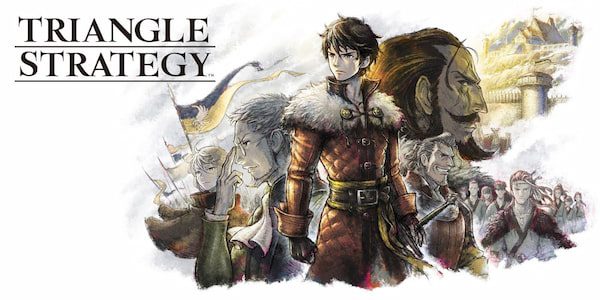
This was announced last year. It is Square Enix’s new HD-2D project after Octopath Traveler, also featuring a weird title.
I did play the first “test” demo for this one, but not the prologue demo which basically, IIRC, gets you through the first 3 chapters. I enjoyed the combat in that first demo, and I’m not sure much changed since (it has been a while), but I was decently hyped for the final product. I very much enjoyed Octopath, so I was pretty interested in seeing more of that.
So let’s go and see if it’s a good one!
Developer: Artdink
Publisher: Nintendo, Square Enix
Release date: March 4th, 2022
Platforms: Switch
Genre: SRPG
Review
This game takes place in the fairly generic medieval fantasy continent of Norzelia. This continent features 3 large nations in constant conflict (Glenbrook, Aesfrost, and Hyzante). You play as Serenoa, the up-and-coming lord of the revered Wolffort demesne, the group that essentially turned the tides in the Saltiron War 30 years ago and serve the royalty of Glenbrook. The game starts with the 3 nations undergoing heavy peace talks as they are about to open a mine that will give better iron trade between the 3 nations (giving a bit less power to Aesfrost as they usually fully control Iron production, while Hyzante seemingly maintains their Salt monopoly). As a gesture of peace, Serenoa is meant to marry Frederica, daughter of the Archduke of Aesfrost who happens to be of the Roselle race (they have pink hair and are generally used as slaves by the Hyzante nation for Salt harvesting). But some crazy things start happening and the nations fall into potential war again, with Aesfrost taking over Glenbrook. As lord of Wolffort, you need to deal with different issues that crop up from the other 2 nations and try to get to a decent end.
How the story is handled is that there are a few chapters where there are BIG choices, which will affect bigger aspects of the story. Namely, this will change what fights your team will take on, but some following cutscenes will be at least a little bit different based on your choices. Like, if you decide to destroy a city, some characters might not be super happy about that. In the last few chapters, there’s one big choice that will determine which of the 3 main endings you’ll get. If you made specific choices in previous chapters, you may get a fourth ending option that is the “good ending”. TBH I was hoping for more endings based on your choices, but that’s not a thing. How these choices are made isn’t quite direct choices. Rather, you and 7 of your characters (the main ones you almost always have available in your party) will have an opinion between 2 or 3 choices you can make. Some will be hellbent on one idea, while others may be undecided or can have their minds changed. You can talk to the characters in your team and try to convince them of a different path, usually with some dialogue choices (some are locked but your local area explorations may unlock them if you talk to people). Then when you’re ready you start the voting, where each character other than you puts a coin in their selected choice on the Scales of Conviction… it’s just a scale, nothing special. If there’s a tie, you decide as the Lord. The decisions tend to lead to different combat scenarios based on your choice. These different choices ALSO lead, in a few cases, to different characters joining your party.
There are other characters that can join your party but they’re optional and you might not end up getting them. So there’s this system where, whenever you do… things… You get points in one of 3 hidden stats, which represent your Convictions. The game is a BIT more open about these once you get to New Game + (apparently the Sundry Store gives you info on this, in my current New Game +). The 3 stats are Morality, Liberty, and Utility. You get a bunch of these with dialogue choices or based on the Scales of Conviction results, or all sorts of actions (for example, spending lots of money gives you liberty points). The only thing I know those stats do is give you access to character stories, which are side-events and backstories for the story characters, but also give you access to new units and their stories. Some of them are characters you already have in your encampment (all the shop NPCs), some are just new characters. They don’t end up being very important story-wise, but in combat, they might have unique skills or they may be able to do some wacky shit, like the young girl that summons clones that auto-fight, or the guy that sets up ladders (actually quite useful in some levels) and a bunch of more standard units. Your story characters also only include one proper healer, so getting more characters capable of healing might be pretty useful in certain combat situations. So your first playthrough might have you missing several characters. Some because you don’t do a story path that leads to them, others because you don’t have the correct amount of hidden stats to get them. Looking at an FAQ, I can see I missed at least 9 characters. 5 of them were because they’re on specific story paths (including one on the fourth ending) and 4 I missed because I didn’t get 2 of the hidden stats high enough. I will note, these bonus characters start appearing in Chapter 5.
Graphically it does looks fine. HD-2D is a pretty visual tech that utilizes what at least looks like voxels for the environment and cool sprites for the characters. But this is one where I kinda wonder… why? It made plenty of sense in a more exploration-based game like Octopath which also made use of giant sprites for enemies and has bigger detailed areas to look at… This feels like it majorly under-utilizes it. You have these small square areas with literally no backgrounds (most of the time the background is just a zoomed-in portion of the world map, with a few exceptions). Yeah, this game looks FINE, some parts look great (especially when there’s water around), but why? The trailer for the Dragon Quest 3 HD-2D remake looks so much better than this, as does the trailer for the Live A Live remake. Here it feels like a bit of a waste. It’s good, but it’s just kinda… there. There are other games that do and will make better use of it.
So anyways, combat time. Remember literally every square-grid-based SRPG ever? There you go! Turn order is based on the speed stat, so turns switch between characters, rather than between players. So no “your turn” and “your opponent’s turn”, it’s by unit. On a character’s turn, it can move once and do one action, in whatever order you want. Some actions may allow extra movement or extra actions, but generally, it’s one move, one action. Movement is based on the movement stat and the jump stat, as a lower jump stat means you won’t be able to go up (or down) higher ledges and will likely have to take detours in some cases. Up I get it, down I think there should be a bit of leeway. Actions can be one of 3 things: Normal attack, special action, and item. Special actions are generally attacks, but not always. They require TP, which you regain one of every turn (and some characters may have ways to gain more). These attacks may deal more damage, or cause status effects, or move the unit or target, or buffs, or healing, or AOE attacks, or traps… or whatever other wacky crap. Some have pretty unique effects, like the blacksmith being able to build ladders that allow characters to bypass the jump stat for vertical movement, or moving while attacking, or using money to attack, or Anna becoming invisible to the enemies (which actually ends their turn if they run into her). Some characters also have passive effects, like Lionel being able to get money when picking up spoils. A fun thing with attacking is that, if you have another character from your team on the other side of an enemy, that character will do a follow-up attack. This is especially strong when you have a character capable of multiple actions, as you’ll also get multiple follow-up attacks for massive damage.
There’s one feature I pretty much never used… not because it’s not useful, but because I kept forgetting it was a thing. You have these special skills called Quietuses. You can use Quietuses on any of your characters’ turns, at the cost of Quietus points. Each skill can only be used once per battle, and of course, if you’re out of Quietus points, that’s that. There are skills for healing, teleporting characters, guaranteeing crits, getting a character to act early, giving a movement stat buff to the entire party… It’s all very useful. I just… forgot, for almost all the battles in the game, to press the – button to access the Quietus menu. But it’s a useful tool you should probably be using.
I actually found battles to be rather difficult, even on normal mode. There’s some grinding you can do and I definitely recommend it (I’ll talk about that more later), and there are some levels I will say I’m not super proud of HOW I won them (one of them I had my single surviving archer just kite 3 shieldbearers to death… they couldn’t get close enough to kill me, so I chipped them for like 20 turns)… but hey, if I can find a cheese, I’ll exploit it. Strategy definitely is useful, and with some of the unique character movesets, you can definitely do fun stuff. Positioning is extremely important. And, thankfully, when you move, you will see what spaces are safe (blue) and which are dangerous (purple). Legitimately, most story battles in the second half of the game were won by the skin of my teeth. But, despite the difficulty, it’s super forgiving. If you lose a battle, which has happened to me a few times, you actually keep the levels and experience you gained in the losing battle AND regain any items you may have used in that losing battle. The game is pretty fine with you losing. I haven’t done that, but I think the same applies if you return to the world map, if you want to go back to the encampment and do more mock battles and power up weapons and stuff. So it’s difficult, but it’s a pretty easy game. Pretty balanced, it’s a game you WILL finish but some levels may take a few tries.
As far as leveling, there are many options. Of course, there’s just plain normal leveling. Every 100 EXP a character levels up. EXP gain is generally determined by the level of the opponent compared to yours. So an opponent, like, 5 levels higher than you just plain gives you 100 EXP to level up once (I think 100 EXP is the max you can get in one hit). This just gives general stat boosts, and every character has a level at which they’ll learn new skills. Characters can also get class promotions. A medal item is required, as well as a specific level. A promoted character gets slightly better stats, as well as access to more of their skills. Like the blacksmith guy, fully promoting him gives him access to building automatic turrets… don’t let that mislead you though, that skill is ass. And the last way to power up is strengthening your weapons. Each character has one weapon they keep the entire time, and each weapon has 3 ranks, improving the attack power for every skill that weapon uses. Each rank also includes a bunch of extra power-ups, may it be stats, or increased damage for specific special skills, or even learning new special actions or passive skills. It’s pretty important to do this, though it requires both a bunch of money and a lot of these rare items you get from random drops when you kill enemies (which you have to spend a bit of time actually picking up off the floor) or from buying them from the merchant NPCs. These are pretty meaningful upgrades overall, especially the main ranking up. Also, there are accessories to buy (and sometimes you may get some as mission rewards), which can increase some stats or give some passives. So characters ARE fully static, minus, basically, the order in which you do all these upgrades and which accessories you give them. And you can level up outside of story battles as well, the Tavern enables for “Mental Mock Battles”… which aren’t mental at all since you literally level up your characters in those. They give you some decent rewards like items for weapon upgrades and money and points to unlock stuff at the Sundry Store.
There’s not TOO much else to talk about, one of the phases in the story is exploration, where you just walk around one of the battle maps, talking to NPCs and stealing shit from their homes… not much to talk about there, some of them are minor puzzles (which failing to solve it means you’ll go down different story paths). Also, I barely mentioned the Sundry Store, basically, it requires points you get from doing certain actions in battle (crits, follow-ups, using high ground, hitting multiple enemies at once, countering, hitting weaknesses, and a few others). Here you can buy Quietuses, lore text, items for promotions, and items for weapon rank upgrades (and probably a few other things I’m not thinking about right now).
Overall
I really enjoyed this game. While some SRPGs go with the “completely edit your characters and parties” stuff where it’s all about finding broken combinations, this gives you very specific characters that can basically not be customized at all. Those are 2 different approaches and both are fine. I like how this game gets you to kinda find teams that will work to fit the current combat situation. And with at least 30 characters to choose from, there’s a good variety and I’m sure there are some interesting strategies to try with different combinations.
I like a lot of what the game has to offer from the combat to how it handles progression and the fact that there are different paths to go through, but I do need to criticize some of this. Namely, despite there being choices to take and such through the game, there are only 4 endings, and you decide on which one you get before the last 3 or so battles. The fourth ending requires a specific story path, so if you want to get that, I assume most people would use a guide. My main complaint really is that your choices right until the end don’t really change the plot all that much since it always leads to the same split for the same 3 endings, regardless of which path you took to get there. Lots of details will be different, but those details are… fairly meaningless overall. If the ending I got is any indication, the other 2 “main” endings are also probably pretty meh (I chose the Frederica ending). Maybe the Golden Route is just the one good ending, who knows.
I have seen people complaining about how much dialogue there is… okay? I mean, it’s an RPG, and some have WAY longer cutscenes than this while at the same time not getting the same complaint. I actually like how this handles it, because between cutscenes if the story is boring you, you can take a break, do some mock battles and manage your team before you get to the next one. It’s not a problem. People who think it’s a problem are idiots. Only the very start of the game is a bit annoying text-wise (since the encampment is more limited at that point)… but it’s not like it’s MGS4 or Xenosaga with their movie-length shitty cutscenes.
I recommend this one fairly strongly, it’s a good time.


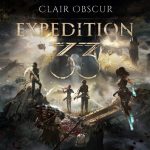

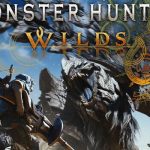
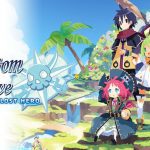
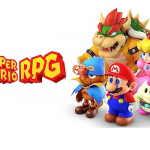
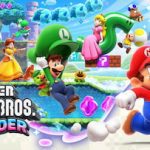

Leave a reply